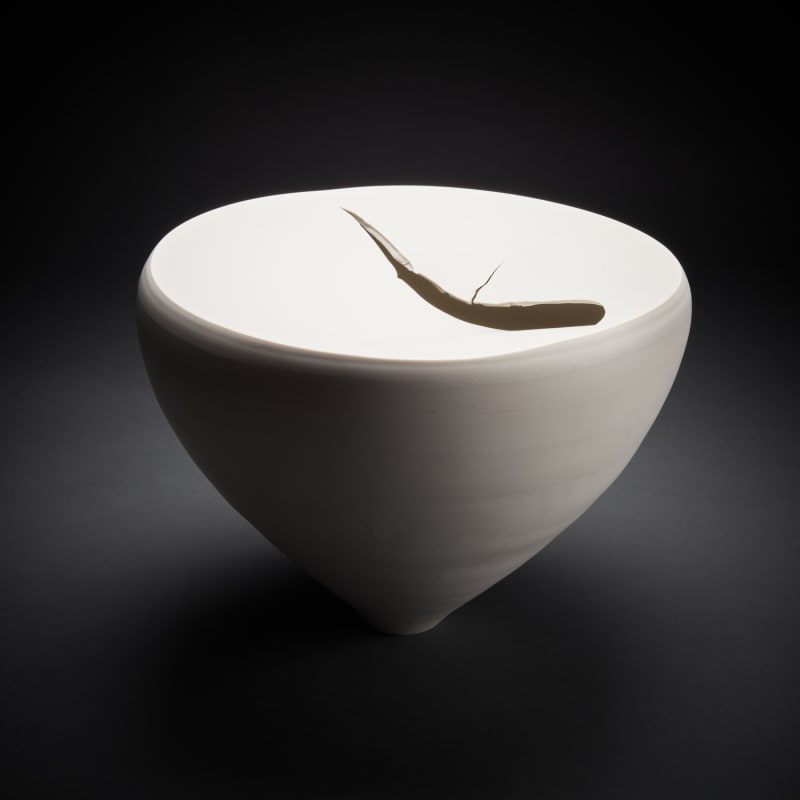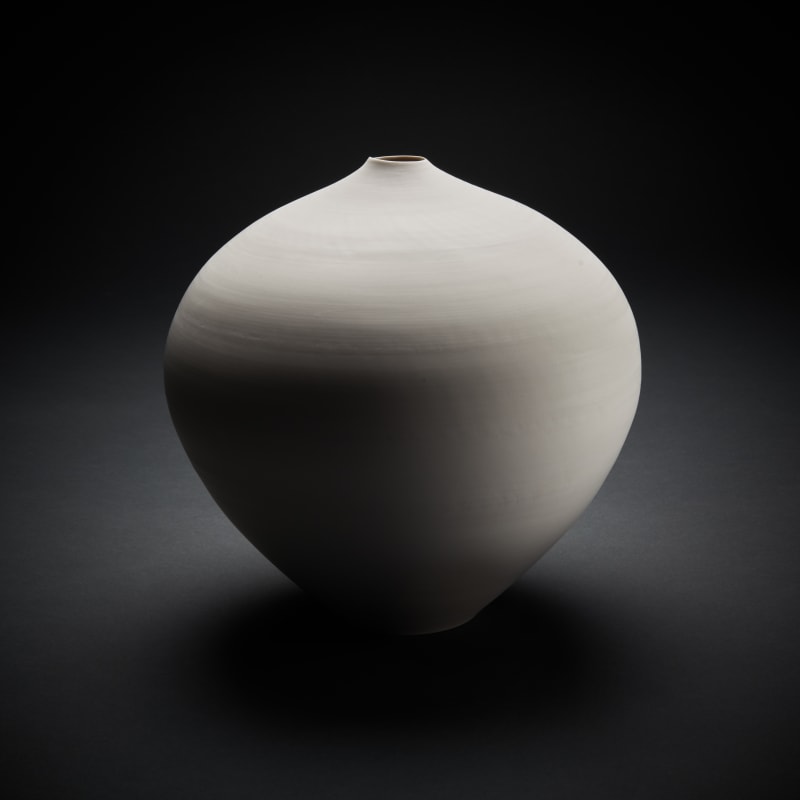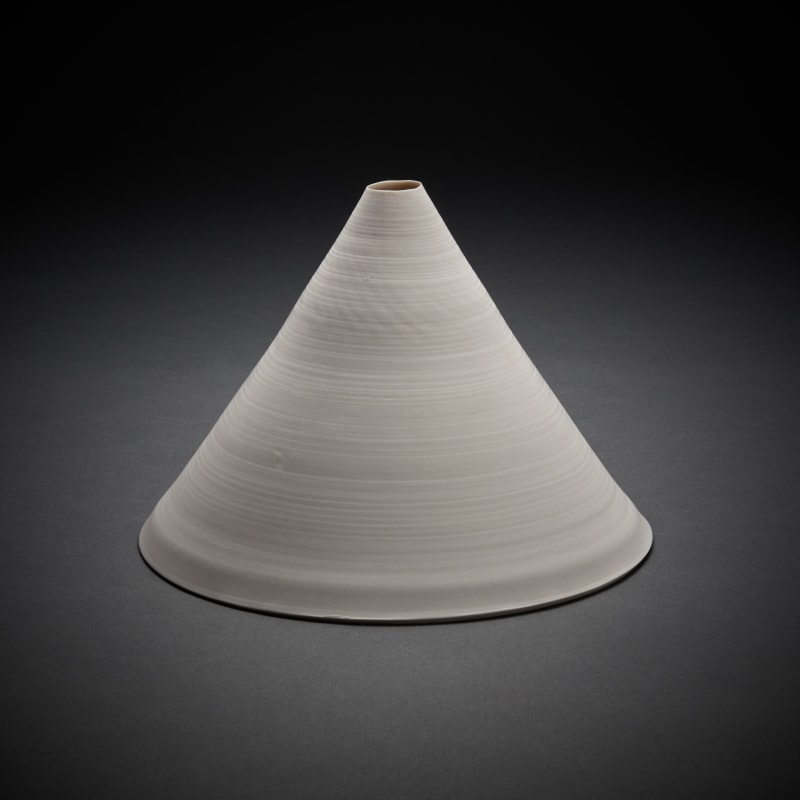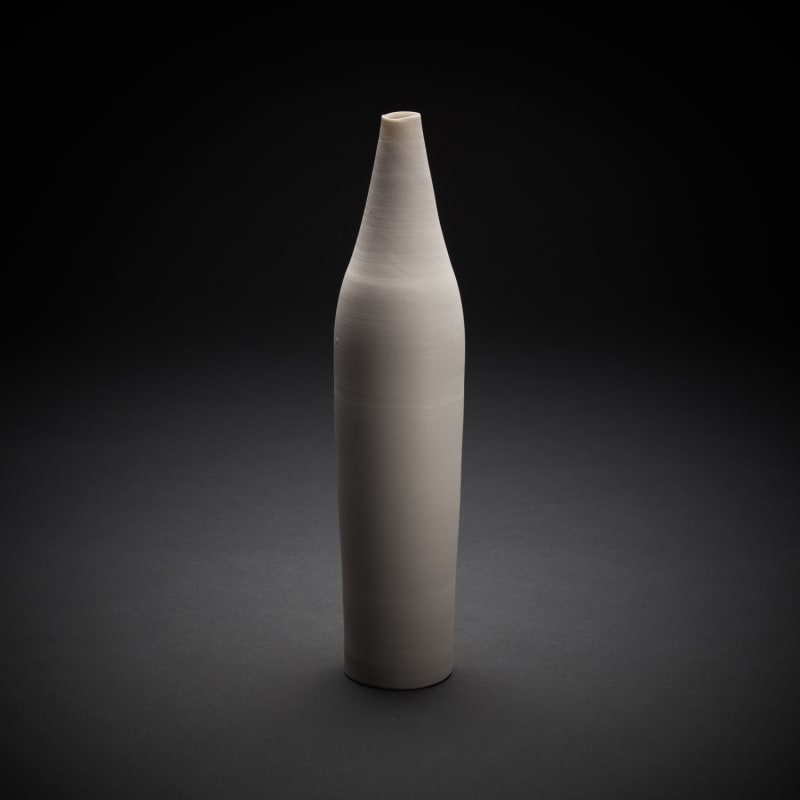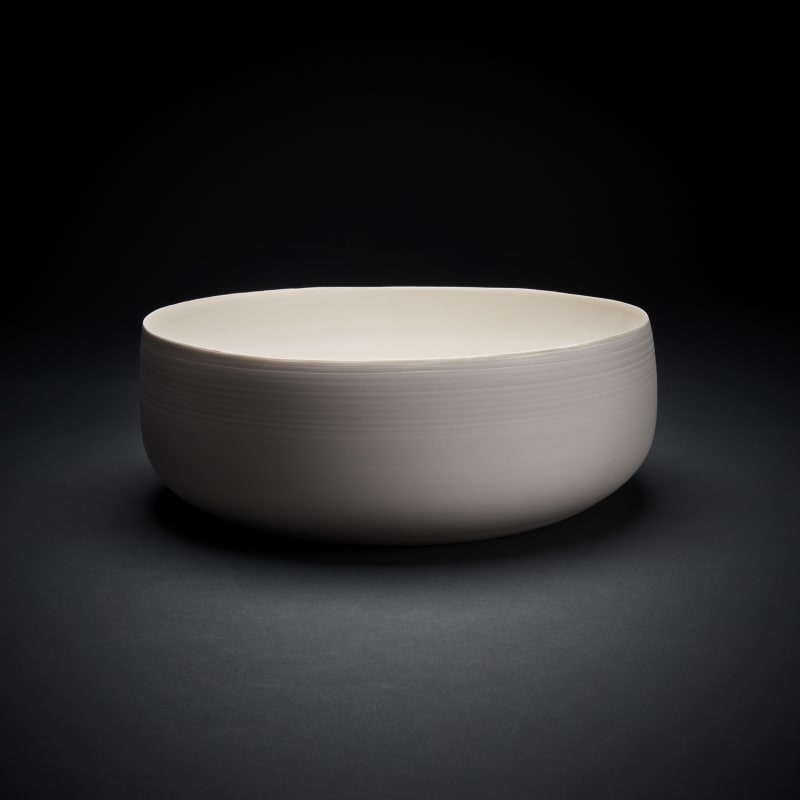For Taizo Kuroda, Simple Forms represents a return to the point where it all began. Kuroda travelled from Japan to Paris in 1966 as a young man looking for inspiration, and the time he spent there set in motion his path to becoming an artist. Since his return to Japan in 1981, he has had little contact with France and has always dreamt of exhibiting there. This year his ceramics will be exhibited at Chateau Lacoste in September and in Paris in November and December; the time is obviously right!
Taizo Kuroda (b.1946) travelled to Paris in his early twenties not knowing then that this journey would take him down an unconventional route to becoming a great artist. The voyage took him six months and, on his arrival, not speaking a word of French, he first found work in a Japanese restaurant. One day a customer asked him if he knew how to buy a ticket to the Opera; Kuroda offered to organise it for him, and so began a friendship which set him on a very different course than the one he was expecting. The man he served at lunch was Tatsuko Shimaoka, a potter who later in life became a Living National Treasure, which is the ultimate recognition in Japan that an individual is able to attain reflecting the high mastery of his craft. One afternoon as they talked, Kuroda expressed interest in continuing his travels and Shimaoka offered to put him in touch with his friend Gaetin Baudin, a potter living near Montreal. Kuroda travelled to Canada via a freezing winter in New York, and it was here that he had his first meaningful encounter with ceramics. One of Baudin’s simple half glazed works sits in Kuroda’s studio in Izu today as a reminder of the nine years he stayed in Canada.
When Kuroda returned to Japan in 1981, he made contact with Shimaoka and lived at his studio for a few years. He then set up on his own and after several years of experimenting, at age 45, began working in his signature Yakishime white porcelain. Kuroda’s decision to limit colour and form has allowed him to channel his efforts, a process which among other things, has turned him into a highly skilled potter. Pure white porcelain clay is notoriously difficult to produce by hand and each shape aims to deliver something beyond the surface.
Simple Forms is an overview of Kuroda’s work and will show the full range of his different shapes. Some are more traditional such as tea bowls and ‘Meiping’ vases which he deliberately exaggerates as he explores the form. Others such as his cylinders and triangles are more universal. The exhibition will also feature some of Kuroda’s most distinctive works which feature cracks and breaks in the surface, creating jagged apertures that emphasize the irregular lines of his vessels.
Why France?
For many people in Japan, France represents the cultural capital of Europe.
France and Japan have enjoyed a strong connection ever since the great traveller, Ambassador and Samurai, Hasekura Tsunenaga landed in St. Tropez on his way back from visiting the Pope in 1615. The two countries became closer in the 19th century through trade and one effect of this was the arrival of large quantities of Japanese prints in Europe that inspired several generations of French artists. This connection was strengthened by Crown Prince Horohito’s tour of Europe in 1921. It was the first time that a Crown Prince had ever travelled abroad and every minute of his three day stay at the Hotel de Crillon in Paris was reported in minute detail by the Japanese press. In artistic terms, the distance between the two countries is much closer than their geographical gap and it is a delight to bring an art form with the simplicity and asymmetrical beauty of Kuroda’s ceramics to France.
“It’s now 35 years since I returned to Japan, but those years still influence me. I’d go so far as to say that my training as a ceramic artist, a calling that has been my life’s work now for 49 years, started in France. I’m eternally grateful to have been influenced by its culture and surroundings, and everyday life. “
Taizo Kuroda
